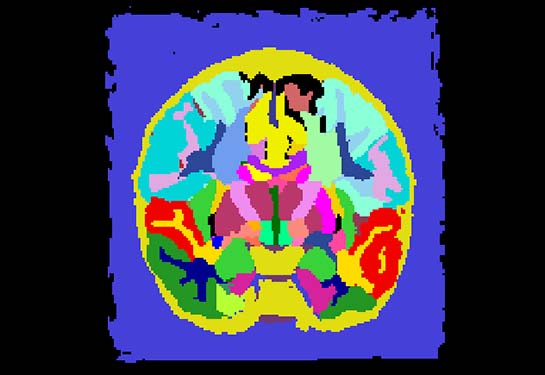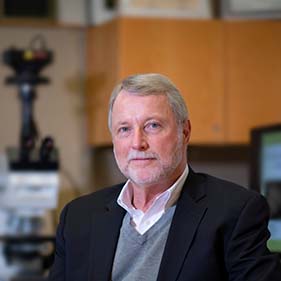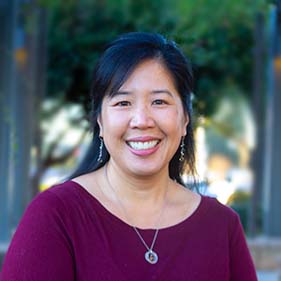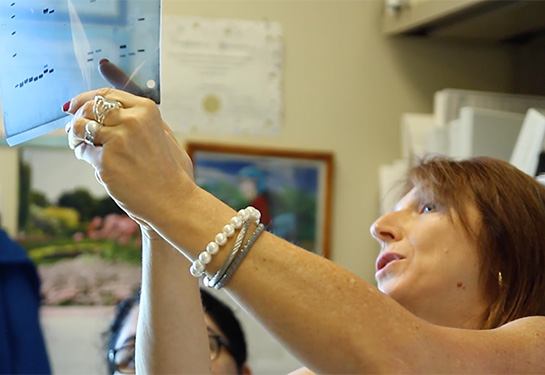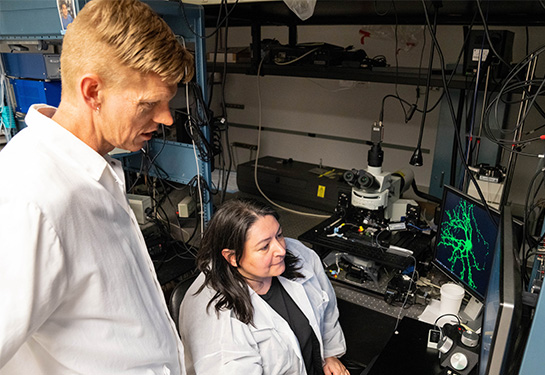Amygdala changes in autistic individuals linked to anxiety
MIND Institute study supports existence of autism-specific types of anxiety
A long-term study involving hundreds of brain scans finds changes in the amygdala linked to the development of anxiety in autistic children. The study by UC Davis MIND Institute researchers also provides evidence of distinct types of anxiety specific to autism. The work was published in Biological Psychiatry.
“I believe this is the first study that’s found any kind of biological association with these autism-distinct anxieties,” said Derek Sayre Andrews, postdoctoral scholar in the Department of Psychiatry and Behavioral Sciences and co-first author on the paper. “Anxiety is really salient right now with the pandemic, and it’s potentially debilitating to autistic individuals, so it’s important to understand what’s happening in the brain.”
It’s important to understand the underlying biology of anxiety and autism and to help these kids out in any way that we can.”—Derek Sayre Andrews
The importance of the amygdala in autism and anxiety
The amygdala is a small, almond-shaped structure in the brain. It plays a key role in processing emotion, particularly fear, and studies have linked it to both autism and anxiety.
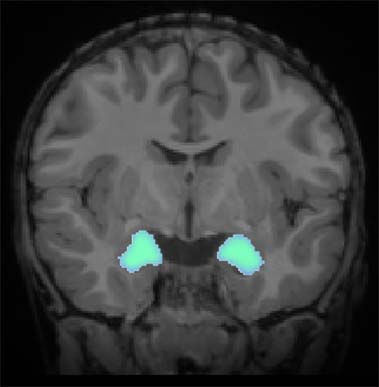
“We have known for some time that dysregulation of the amygdala is implicated in anxiety,” said David G. Amaral, UC Davis distinguished professor, Beneto Foundation Endowed Chair and co-senior author on the paper. “We’ve also shown previously that the growth trajectory of the amygdala is altered in many autistic individuals.”
Anxiety commonly occurs with autism. Previous research by Amaral and other MIND Institute researchers has found that the rate of anxiety is 69% in autistic children and 8% in non-autistic children.
But until now, no one had looked at the development of the amygdala over time in autistic individuals, in relation to different forms of anxiety.
Hundreds of brain scans
The research team used magnetic resonance imaging (MRI) to scan the brains of 71 autistic and 55 non-autistic children between the ages of 2 and 12. Children were scanned up to four times. All were participants in the Autism Phenome Project, a longitudinal study that started in 2006 at the MIND Institute.
Clinical psychologists with expertise in autism interviewed the parents about their child. The interviews were done when children were 9-12 years old. They included questions about traditional anxiety, as defined by the DSM-5, a manual used to diagnose mental health conditions. The psychologists used the Anxiety Disorders Interview Schedule (ADIS) as well as the Autism Spectrum Addendum (ASA), a tool developed to tease out autism-specific anxieties.
Given that clear brain alterations are associated with autism-distinct anxiety tends to validate the concept of the existence of this type of anxiety in autism.”—David G. Amaral
The results showed that nearly half of the autistic children had traditional anxiety or autism-distinct anxiety, or both. Autistic children with traditional anxiety had significantly larger amygdala volumes compared to the non-autistic children. The opposite was true for autistic children with autism-distinct anxieties: They had significantly smaller amygdala volumes.
“Previous studies were not teasing apart amygdala size in relation to these two different types of anxiety,” said Christine Wu Nordahl, a professor in the Department of Psychiatry and Behavioral Sciences and co-senior author on the paper. “We were reminded that different autistic subgroups may have different underlying brain changes. If we had lumped both traditional and distinct anxieties together, the amygdala changes would have canceled each other out and we would not have detected these different patterns of amygdala development.”
Nordahl and Amaral have tracked autism subgroups for 15 years in the Autism Phenome Project and have published numerous studies advancing the field of knowledge in this area.
“The real power of this particular study is that it tracks the trajectory of amygdala development from age 2 to age 12 to see if there are early predictors of these different types of anxiety – whether there are different patterns.” Nordahl said.
Autism-specific anxiety versus traditional anxiety
Prior research has suggested that anxiety in autistic individuals is complex. Some experience traditional anxiety, which can include fearful avoidance, in contexts experienced by non-autistic people. But others may experience anxiety in contexts that are distinctly specific to autism.
“It’s similar, but the context in which the anxiety arises is different,” Andrews explained. “It could be uncommon phobias like facial hair or toilet seats, or it could be fears relating to social confusion or excessive worries related to losing access to materials about something they’re really interested in. It’s anxiety arising within an autistic context.”
The research into autism-distinct anxiety is new, and the authors note that the results would need to be replicated, but the study makes a strong case for it.
“Given that clear brain alterations are associated with autism-distinct anxiety tends to validate the concept of the existence of this type of anxiety in autism,” Amaral said.
In fact, 15% of the participants in the study had only the distinct autism-specific anxiety.
The real power of this particular study is that it tracks the trajectory of amygdala development from age 2 to age 12 to see if there are early predictors of these different types of anxiety – whether there are different patterns.”—Christine Wu Nordahl
“You can see why it’s important to acknowledge this, because these children would be missed through ordinary screening,” Andrews explained. He added that this type of anxiety may require a specialized type of treatment. “That’s why it’s important to understand the underlying biology of anxiety and autism and to help these kids out in any way that we can.”
In the future, the researchers plan to examine how the amygdala interacts with other regions of the brain.
“We don’t think the story ends with the amygdala,” Nordahl said. “We recognize that it doesn’t act all by itself and it’s critical to explore who the amygdala is talking to and what it’s doing through its network of connections with other brain regions.”
Coauthors on the paper included Leon Aksman of USC (co-first author); Conner M. Kerns of the University of British Columbia; Joshua K. Lee, Breanna M. Winder-Patel, Danielle Jenine Harvey, Einat Waizbard-Bartov, Brianna Heath, Marjorie Solomon and Sally Rogers of UC Davis, and Andre Altmann of University College, London.
Related stories:
Big brains and white matter: New clues about autism subtypes
Autism severity can change substantially during early childhood
The UC Davis MIND Institute in Sacramento, Calif. was founded in 1998 as a unique interdisciplinary research center where families, community leaders, researchers, clinicians and volunteers work together toward a common goal: researching causes, treatments and potential prevention of challenges associated with neurodevelopmental disabilities. The institute has major research efforts in autism, fragile X syndrome, chromosome 22q11.2 deletion syndrome, attention-deficit/hyperactivity disorder (ADHD) and Down syndrome. More information about the institute and its Distinguished Lecturer Series, including previous presentations in this series, is available on the Web at mindinstitute.ucdavis.edu.

